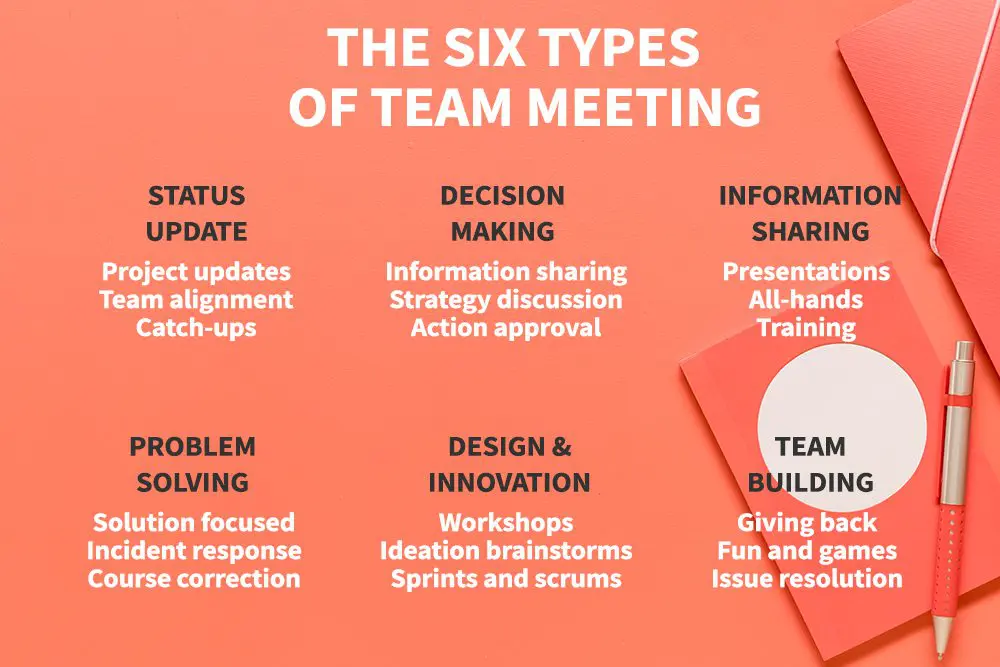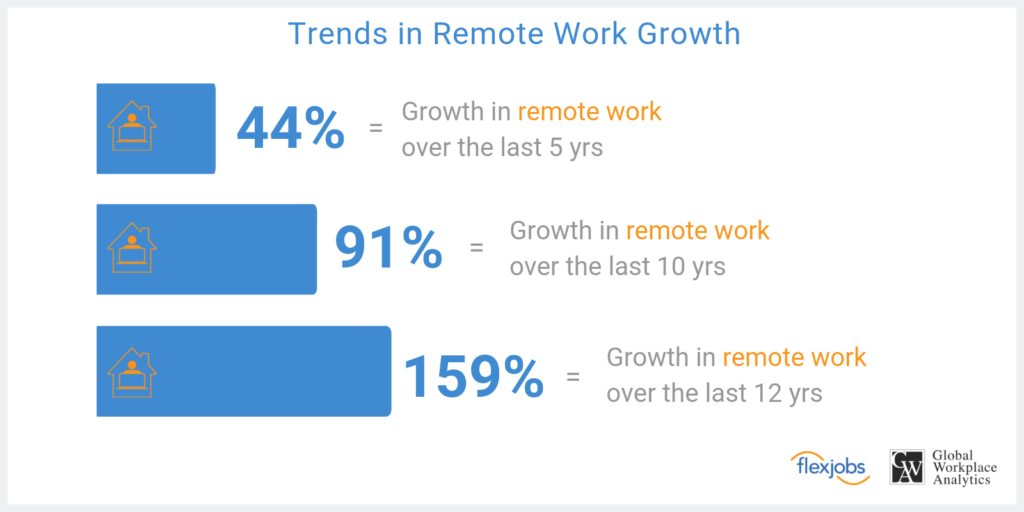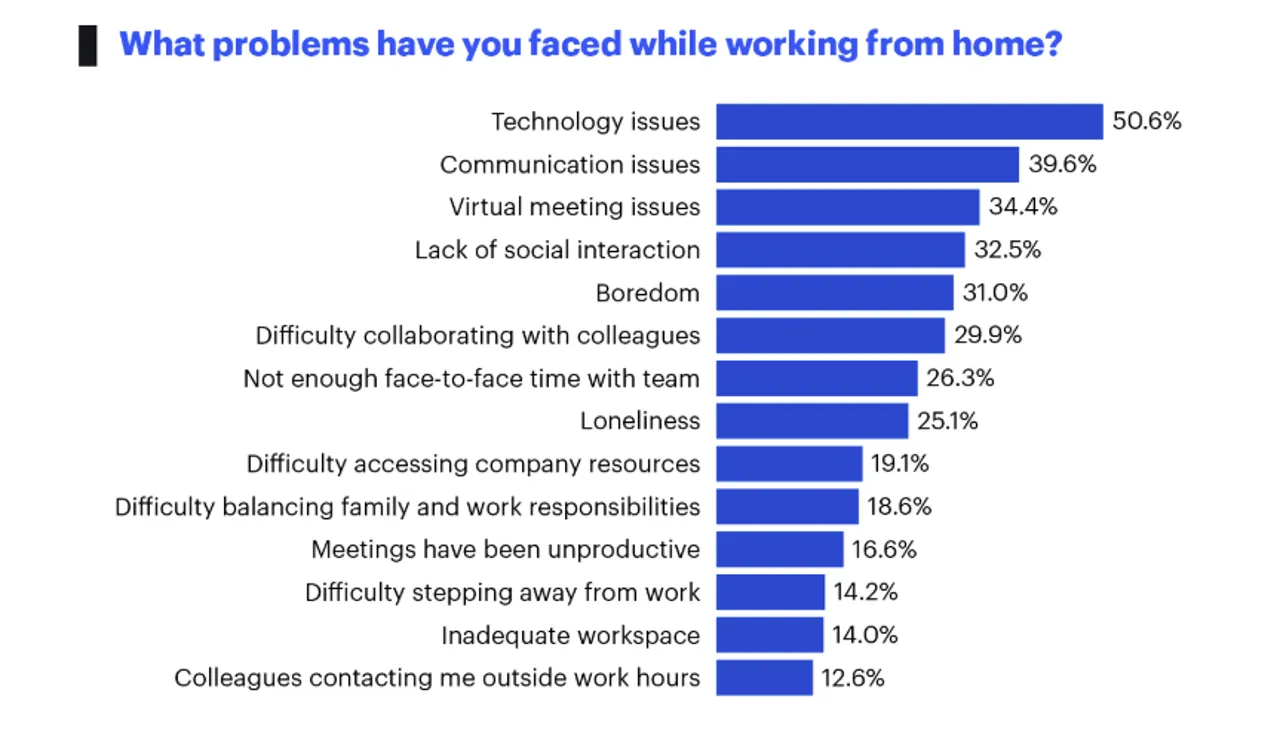Office meetings – whether you love them or hate them – are a vital part of workplace culture. Over the last decade, as we’ve moved into more flexible styles of working, it’s now more common than ever before to find yourself in multiple meetings a day. Whether those meetings are touchpoints with your team, planning out future endeavors, or simply just checking in, most employees are inundated with meetings each week.
The vast majority of people, coming in at around 92% of workers, still value meetings as an opportunity to connect with others, discuss, and contribute to ongoing projects. However, the belief that meetings are necessary doesn’t detract from the fact that 90% of people routinely lose concentration in meetings, with an estimated $37 billion being spent each year on unproductive meetings.
In order to get the most out of your meetings, your employees, managers, and contributing partners should all understand both the value of meetings and how to actually extract that value. In this article, we’ll dive into everything your business needs to know about office meetings, covering:
- How To Run Effekctive Office Meetings
- Tips for More Productive Office Meetings
- The Benefits of Regular Office Meetings
- The Drawbacks of Office Meetings
- Why Your Team Should Change the Format of Office Meetings
- How to Conduct Remote Office Meetings
- Top Tools for Office Meetings
- How Office Meetings and Company Culture Go Hand in Hand
- How To Handle Conflict During Office Meetings
- Effective Strategies for Engaging and Involving All Meeting Participants
Let’s dive into this definitive guide to office meetings.
How To Run Effective Office Meetings
The vast majority of employees believe that most of the meetings they attend waste time. Wasted time can come in two main formats, the first being that the meeting doesn’t apply to that person and the second being that the office meeting simply went on for too long. In order to run effective office meetings, managers need to plan ahead to ensure they create a productive space where conversation can thrive.
In order to run effective office meetings, we recommend that managers follow these strategies:
Make the Most of Agendas – Meeting agendas can reduce the total time spent in a meeting by almost 80%. They are undoubtedly one of the most powerful tools you can use at work if you’re looking to run effective meetings. By outlining what the meeting is for, why you have invited each person, and the point-by-point agenda for the meeting, everyone will have a much clearer idea of what you’ll be doing in the meeting. Agendas also make sure that everyone is already up to speed with the task at hand before they arrive, allowing you to dive into problem-solving without any doubts or explanations.
Reduce Meeting Run Time – Based on the average person’s attention span and the average salary per employee, it benefits the company and your employees to keep meetings as short as possible. The best length for a meeting is around 15 minutes, as this keeps it short enough for people to concentrate throughout but long enough for sharing information and ideas. Especially if your meetings are with senior management, it can end up costing over $1,000 an hour for a meeting – you’ll want to keep them short and sweet wherever you can.
End with Action – After each meeting, every single person that attended should come away with a clear vision of why they were there and what they need to do to follow up on that office meeting. In order to run an effective office meeting, there should be a clear action item for each attendee after that specific session. For example, if you’ve called someone to a meeting about a project, they should know the next step they need to complete to keep that project progressing. At the end of your meetings, assign people with action items to increase accountability and ensure your meeting feels as impactful as possible.
Across the board, by employing these three core strategies, you’ll be able to run more effective meetings. With less time wasted in each meeting and a clear purpose outlined for each employee that attends a meeting, absolutely everyone will know why they were there and what their follow-up plans will be.
Be sure to read our full article on how to run effective office meetings for even more insight.
Tips for More Productive Office Meetings
Productive office meetings can change the course of a project, motivate employees, and steer your business toward success. That said, a bad meeting can leave everyone feeling a little hard done by and bored from having wasted time. The line between those wonderful meetings where everything lines up and those where your employees ask themselves, once again, why they sit through so many meetings is, unfortunately, very slim.
Here are a few tips that managers can use to run more productive office meetings:
- Timeboxing – Timeboxing is an office meeting strategy that allows you to clearly segment your meetings based on the activities you will do. Not only does this sense of restriction stop your meetings from overrunning and wasting time, but it can also help to ensure that your team moves through topics rapidly and more productively. Create clear deadlines within the meeting, denoting how many minutes you’ll spend discussing each issue. Focus on short periods, and be sure to stick to the timing that you’ve set out.
- Minimise Distractions – Although some short pleasantries when everyone walks into the room can be nice, be sure to keep any discussion that isn’t on topic to a minimum. You want to get into the meeting’s purpose as soon as possible, ensuring everyone stays engaged, focused, and ready to deliver productive insights. Whenever your employees are distracted, you could lose their concentration for the rest of the meeting. Keep things short, direct, and to the point.
- Change Things Up – One element of meetings that can cause them to feel more boring than normal is when the style and structure of meetings become too rigid. If you’re used to having one team member or leader host all of your meetings, think of switching that up. The naturally different presenting and communication styles that different team members have will bring an element of newness to the conversation and keep everyone on their toes. With the strong correlation between employee engagement and productivity, this is a great way of boosting output.
These three tactics for more productive meetings are really only scratching the surface of everything managers and team members can do. If you’re looking for even more tips on running productive office meetings, be sure to read through our full article.

What Are the Benefits of Regular Office Meetings?
Regular office meetings are a phenomenal way of engaging your employees, keeping everyone on the right page, and working through projects efficiently. When you make regular office meetings a part of your work schedule, they become a useful space for dialogue, planning, operations, and checking in with your employees.
Great meetings can be motivational and give your staff the support they need to flourish at work. There are a number of benefits of regular office meetings:
- Increased Productivity – Regular office meetings can become a powerful tool for productivity in an organization. Alongside helping people to organize projects more effectively, meetings allow people to get to know each other, boosting relationships and helping to forge a better workplace culture. Workplaces where employees feel happier and aligned with the culture are more productive, meaning your meetings can lead to huge productivity gains across the board.
- Streamlined Operations and Workflows – As centralized spaces where employees can chat, discuss projects, and plan out the next steps in workflows, regular office meetings are an invaluable tool for progress. Using strategies that make your meetings as productive as possible will mean that you can harness the many benefits of office meetings without suffering the downsides or loss of working time. If you’re looking to increase communication within your organization, planning strategic meetings could be the way to go.
- Enhanced Employee Wellness – Regular office meetings don’t have to only be about progress and moving projects along. On the contrary, your office should focus on creating regular meetings between managers and staff on a 1:1 basis. These private meetings will allow your employees to talk about their current work schedule, the amount of work they’re being given, and reach out for help if they need it. Over time, these meetings can become a fantastic way of preventing burnout in the workplace and keeping your organization running smoothly. Employee wellness should always be a priority for your business.
These three benefits of regular office meetings demonstrate the advantages a business can gain from incorporating this communication structure into its weekly fabric. Effective regular meetings can have a hugely positive impact across the board on employee culture, satisfaction, wellness, and productivity.
Be sure to read our extended article about the real benefits of regular office meetings for the full scope of advantages that your business can reap from meetings.
What Are the Drawbacks of Office Meetings
If a business has a culture of regular office meetings, you know they’re either doing something right or terribly wrong. Depending on how effective, productive, and integrated your meetings are, the reality of whether they’re worth it or not can vary greatly. When done well, regular office meetings can lead to higher productivity rates, increased employee engagement, and higher overall satisfaction at work.
Yet, the reverse of this can also be true, with regular office meetings leading to a number of drawbacks. If you don’t manage your meetings effectively, there are a number of disadvantages:
- Unproductive Meetings – Simply put, if a person comes out of a meeting not understanding why they were there, you’ve done something wrong as a manager. Without clearly understanding that every employee’s time is valuable and respecting that fact, you’ll be throwing away money for your company and stealing from employees’ working hours. The more people attend an unproductive meeting, the worse this gets for your business.
- Wasting Time – The average amount of time that employees want meeting to last is around the 15-minute mark. That said, over 58% of employees report that their average meeting lasts over 30 minutes, representing a huge amount of time that’s lost each week to inefficient office meeting management. If you invite people that don’t need to be there or fail to provide a clear agenda, you’ll be wasting time and annoying your workforce in the process.
- Moral Impact – We’ve all been in a situation where we come out of a meeting feeling frustrated with how pointless it was or the fact that it went on for so long. If you find your employees responding to meeting feedback with negative sentiments time and time again, you’re likely damaging employee morale. Happier employees show higher levels of productivity and efficiency, meaning you should do everything you can to minimize the number of meetings that impact office morale.
- Reduce Working Hours – Even if you have the most effective meeting in the world, the fact is that a meeting always takes time out of people’s days. Upwards of 92% of employees find themselves doing other work while in meetings, as they need to use this time to get ahead on other duties. If you have too many meetings in a week, you’ll end up wasting people’s time no matter what. Due to this, you should always try and minimize the number of meetings that you sign employees up for each week.
If you run ineffective meetings, you could be exposing your business to all of the above drawbacks and more. That said, we have written an extensive list of strategies that you can employ to minimize the drawbacks of office meetings, helping to set you on the right path to success.
Why Your Team Should Change the Format of Office Meetings
If you survey across industries and organisations, you’ll find a nearly endless number of meeting styles, names, and formats. That said, most of these distinct names and techniques will boil down into the same broad category strokes. While some businesses suggest there are six types, others settle on four or five.
Despite your company’s current approach, understanding that there are more meeting formats available to you will help you to more effectively work with your teams. If everyone at your organization knows what each type of meeting entails, then this additional marker on a meeting invite will help people to know what to expect.
Depending on the specific result you want to have from your meeting, the correct meeting strategy will vary. For example:
- I want to improve team communication – The best way to improve communication in a team is to hold spaces for team-building and brainstorming. By creating a positive space where people can feel their progress and relate to others, you can build inter-team relationships. Over time, as your employees become familiar with one another, you’ll be able to increase average team member happiness and make everyone feel more comfortable at work.
- I want to check on employee mental health – 1:1 meetings can be a powerful tool for creating positive relationships between managers and employees. During these meetings, you can discuss how an employee is currently feeling, adjusting their workload to free up time and prioritize their mental wellbeing.
- I want to streamline project progress – In this case, a daily scrum or morning team meeting will give you the space you need to check in on what tasks people are currently working on and what’s next. Not only does this keep people accountable, but it also helps employees to understand what their coworkers are currently working on, creating a sense of communal accountability for all.
By changing the format of your office meeting to match the intent behind why you’re calling that session, you’re able to engineer more effective group communication, helping everyone to feel more confident, productive, and ready when walking out of your next meeting.
How to Conduct Remote Office Meetings
Over the past few years, the number of remote office meetings that take place has skyrocketed. While remote meetings used to only draw together offices or businesses that were in different parts of the globe, we now experience remote meetings every single day. Even within companies, it’s now extremely common to have a hybrid workforce, with many employees using platforms like Zoom or Google Meet to join remote calls.
In this age of remote office meetings, managers need to understand how to conduct them efficiently. Here are some quick-fire tips to get you through your first remote office meeting:
- Solidify Your Technology – Make sure you have all the best tech available to you. You don’t want to start off a meeting with a blank screen and audio issues.
- Lean into the Remote – Don’t skirt around the fact that you’re all remote in a meeting. Lean into it, introducing people if they need an introduction and making the most of the meeting despite its less natural format.
- Arrive Early – You should always arrive early to online meetings, as you’ll likely experience a few difficulties when joining the call that you need to iron out.
If possible, be sure to schedule your meetings to allow people time to log on and join the call. Five minutes past the hour gives people enough time to log into their accounts on the hour and join the call as soon as they can. Our definitive guide to conducting remote office meetings covers this and more, be sure to check it out for a more comprehensive exploration of remote meeting etiquette.
Top Tools for Office Meetings
Technology is the single leading issue that employees experience when working from home. In order to overcome tech issues and facilitate effective communication amongst your employees, you should always make use of the tech you have available to you.
Here are some tech tools that will aid you in office meetings, whether remote or in-person:
- Meeting Notes – An electronic note-taking app that either makes notes or provides space for employees to collaborate and create notes during a meeting will help to keep everyone on the same page.
- Video Conferencing Tools – Video conferences like Zoom and Google Meet have become a core part of the workforce and are a vital addition to any business.
- Shared Calendars – Creating a centralized system that allows employees to check the schedule of other employees will ensure that they know when they can schedule a meeting without double-booking someone.
Solidifying your tech stack and ensuring employees have had training on new tools will help take your office meetings to the next level. Be sure to check out our list of the top tools for office meetings to increase the productivity and efficiency of your next meetings.
How Office Meetings and Company Culture Go Hand in Hand
Office meetings are a centralized space that all employees will inevitably be a part of from time to time. Due to the shared space that they provide, office meetings also represent a wonderful place to distribute and fortify notions of company culture.
Your company culture represents the core identity of your business, the foundational traits and ideas that make up your business and the people that work there. For example, one central trait could be transparency, with your employees having clarity about salaries, working policies, and promotional structures in your business.
In this case, you would carry that same sense of transparency and fairness into all of your meetings, insisting on a culture in meetings that allow everyone to speak, be heard, and share ideas during meetings. By focusing on your meetings as a microcosm of your company culture, you’ll be able to feed back into your original vision, building toward the institution you have always wanted to be.
As a core part of business culture, office meetings are a phenomenal way of building and strengthening your sense of company culture. Make sure to read our dedicated article focusing on office meetings and company culture.
How Do I Handle Conflict During Office Meetings?
Even the most passive workspaces will have their share of conflicts. Conflict could start for absolutely any reason, even over something as small as two employees disagreeing about the best approach to work. Considering we spend over 90,000 hours at work, over a third of our lives for most people, people often have a lot of passion for their work that can lead to butting heads.
There are a number of ways you can handle conflict during office meetings:
- Actively Listen to Participants – If people feel like their manager isn’t listening to them, they can quickly become frustrated. Always let people know that they’re valued by engaging with them when they speak and actively listening.
- De-escalation Techniques – If your employees seem to be headed toward a confrontation, be sure to use de-escalation techniques to take back control and calm down the situation. A little diversion or a moment away can help to reduce conflict and allow people to regain their composure.
- Post-Meeting Follow-Up – Asking people their opinions on a meeting and how they felt during it can help pinpoint conflicts brewing under the surface. From there, you’ll be able to manage them more effectively to avoid any disasters in the future.
What Are Some Effective Strategies for Engaging and Involving All Meeting Participants
Around half of the workforce identify as introverts, meaning that they’re less likely to feel confident when speaking up in office meetings and sharing their ideas. This does not mean that their ideas are worse or less meaningful than their more confident employees. On the contrary, giving everyone the space to speak without judgment will help to ensure you get the very best from your employees.
Here are some effective strategies that you can use to engage your meeting participants:
- Gathering Feedback – After each meeting, you should ask employees via an anonymous survey if they feel like they had the opportunity to engage in an office meeting. If they didn’t, allow them space to describe why, which will give you a place to improve your meetings going forward.
- Icebreakers – Opening up the floor for a quick round of conversation or icebreakers at the start of a meeting can make sure people feel more comfortable. Many people are worried about the first time they speak, which means that a quick icebreaker will get this out of the way and instantly make everyone feel ready to work.
- Agendas – Assigning roles to people on the agenda will allow them to go into the meeting feeling more prepared, which can help those that may not feel confident outline what they want to say before stepping into the meeting.
Alongside these strategies, we’ve written about a number of effective strategies for engaging and involving all of your employees during meetings. Be sure to check out our complete article for the rundown.
Final Thoughts
Office meetings can be one of the most effective parts of a well-run organization, helping to build momentum, provide support, and synergize employees across departments. At the same time, they can be the most frustrating part of working at a company, draining employee energy, wasting time, and preventing people from getting any real work done.
Everyone in the world of business has been in both types of these situations. A great manager will be able to strategically plan, orient, manage, and execute their office meetings to make sure they fall into the category that benefits everyone rather than the latter. By using the tips, strategies, tools, and meeting styles that we’ve outlined in this article, you’ll be on your way to creating winning office meetings every single time.
Best of luck in all of your meeting endeavors!




